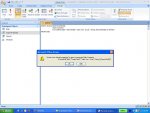Sevn
I trust ME!
- Local time
- Today, 12:49
- Joined
- Mar 13, 2008
- Messages
- 97
I need to merge several fields across a table into one field. The table was created from a XtabQry that has several blanks across, that I would like excluded. I found some function code on the net, but can't seem to get it to work.
Can someone please provide some assistance?
Here is the Qry string I am trying to run:
?fConcatFld("blah","ParentTieID","Sales Terr SCust","string","STSNew")
I created a new module called "fConcatFld", and pasted the following code into it.
'************ Code Start **********
'This code was originally written by Dev Ashish
'It is not to be altered or distributed,
'except as part of an application.
'You are free to use it in any application,
'provided the copyright notice is left unchanged.
'
'Code Courtesy of
'Dev Ashish
'
Public Function fConcatFld(stTable As String, _
stForFld As String, _
stFldToConcat As String, _
stForFldType As String, _
vForFldVal As Variant) _
As String
'Returns mutiple field values for each unique value
'of another field in a single table
'in a semi-colon separated format.
'
'Usage Examples:
' ?fConcatFld(("Customers","ContactTitle","CustomerID", _
' "string","Owner")
'Where Customers = The parent Table
' ContactTitle = The field whose values to use for lookups
' CustomerID = Field name to concatenate
' string = DataType of ContactTitle field
' Owner = Value on which to return concatenated CustomerID
'
Dim lodb As Database, lors As Recordset
Dim lovConcat As Variant, loCriteria As String
Dim loSQL As String
Const cQ = """"
On Error GoTo Err_fConcatFld
lovConcat = Null
Set lodb = CurrentDb
loSQL = "SELECT [" & stFldToConcat & "] FROM ["
loSQL = loSQL & stTable & "] WHERE "
Select Case stForFldType
Case "String":
loSQL = loSQL & "[" & stForFld & "] =" & cQ & vForFldVal & cQ
Case "Long", "Integer", "Double": 'AutoNumber is Type Long
loSQL = loSQL & "[" & stForFld & "] = " & vForFldVal
Case Else
GoTo Err_fConcatFld
End Select
Set lors = lodb.OpenRecordset(loSQL, dbOpenSnapshot)
'Are we sure that duplicates exist in stFldToConcat
With lors
If .RecordCount <> 0 Then
'start concatenating records
Do While Not .EOF
lovConcat = lovConcat & lors(stFldToConcat) & "; "
.MoveNext
Loop
Else
GoTo Exit_fConcatFld
End If
End With
'That's it... you should have a concatenated string now
'Just Trim the trailing ;
fConcatFld = Left(lovConcat, Len(lovConcat) - 2)
Exit_fConcatFld:
Set lors = Nothing: Set lodb = Nothing
Exit Function
Err_fConcatFld:
MsgBox "Error#: " & Err.Number & vbCrLf & Err.Description
Resume Exit_fConcatFld
End Function
'************ Code End **********
I get the following error when I attempt to run the Qry string:
Expected variable or procedure, not module.
Any help will be greatly appreciated.
Thanks,
Can someone please provide some assistance?
Here is the Qry string I am trying to run:
?fConcatFld("blah","ParentTieID","Sales Terr SCust","string","STSNew")
I created a new module called "fConcatFld", and pasted the following code into it.
'************ Code Start **********
'This code was originally written by Dev Ashish
'It is not to be altered or distributed,
'except as part of an application.
'You are free to use it in any application,
'provided the copyright notice is left unchanged.
'
'Code Courtesy of
'Dev Ashish
'
Public Function fConcatFld(stTable As String, _
stForFld As String, _
stFldToConcat As String, _
stForFldType As String, _
vForFldVal As Variant) _
As String
'Returns mutiple field values for each unique value
'of another field in a single table
'in a semi-colon separated format.
'
'Usage Examples:
' ?fConcatFld(("Customers","ContactTitle","CustomerID", _
' "string","Owner")
'Where Customers = The parent Table
' ContactTitle = The field whose values to use for lookups
' CustomerID = Field name to concatenate
' string = DataType of ContactTitle field
' Owner = Value on which to return concatenated CustomerID
'
Dim lodb As Database, lors As Recordset
Dim lovConcat As Variant, loCriteria As String
Dim loSQL As String
Const cQ = """"
On Error GoTo Err_fConcatFld
lovConcat = Null
Set lodb = CurrentDb
loSQL = "SELECT [" & stFldToConcat & "] FROM ["
loSQL = loSQL & stTable & "] WHERE "
Select Case stForFldType
Case "String":
loSQL = loSQL & "[" & stForFld & "] =" & cQ & vForFldVal & cQ
Case "Long", "Integer", "Double": 'AutoNumber is Type Long
loSQL = loSQL & "[" & stForFld & "] = " & vForFldVal
Case Else
GoTo Err_fConcatFld
End Select
Set lors = lodb.OpenRecordset(loSQL, dbOpenSnapshot)
'Are we sure that duplicates exist in stFldToConcat
With lors
If .RecordCount <> 0 Then
'start concatenating records
Do While Not .EOF
lovConcat = lovConcat & lors(stFldToConcat) & "; "
.MoveNext
Loop
Else
GoTo Exit_fConcatFld
End If
End With
'That's it... you should have a concatenated string now
'Just Trim the trailing ;
fConcatFld = Left(lovConcat, Len(lovConcat) - 2)
Exit_fConcatFld:
Set lors = Nothing: Set lodb = Nothing
Exit Function
Err_fConcatFld:
MsgBox "Error#: " & Err.Number & vbCrLf & Err.Description
Resume Exit_fConcatFld
End Function
'************ Code End **********
I get the following error when I attempt to run the Qry string:
Expected variable or procedure, not module.
Any help will be greatly appreciated.
Thanks,

